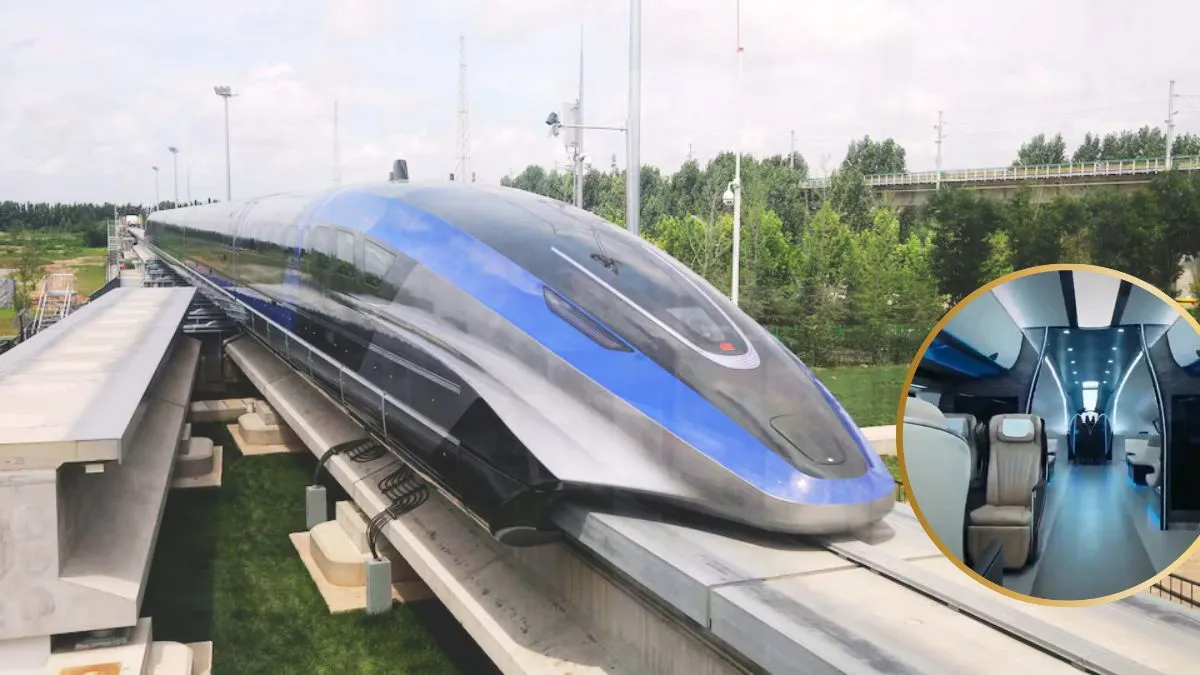- By Ajeet Kumar
- Tue, 29 Jul 2025 09:49 PM (IST)
- Source:JND
China's fastest train: Bullet trains are now becoming an outdated concept for the developed economies. Countries like Japan and China are now in the race to chase air travel speed with the new era of trains. In recent development, China has set a new global benchmark in high-speed rail technology after one of its magnetic levitation (the process of suspending an object in the air without any physical support or contact) trains reached an unprecedented speed of 623 kilometres per hour.
The speed of the new technology trains, named Maglev-- has the potential to beat the speed of current bullet trains running in China. Bullet trains, also known as high-speed trains in China, can reach operational speeds of up to 350 km/h. However, in some routes, the Chinese Railways achieved a speed of 431km/h.
The recent breakthrough was confirmed by state media and officials from the China Railway Group, marking a significant leap forward in transportation innovation.
🚨 China's Maglev train hits 623 km/h, breaking global speed record. pic.twitter.com/qxrQznE4Mn
— Indian Tech & Infra (@IndianTechGuide) July 29, 2025
Record-breaking test in Shanxi
Maglev Trains in China: The record-breaking test took place on a specially designed track in Shanxi province, where engineers have been pushing the boundaries of maglev technology as part of China’s long-term vision to revolutionise travel across the country and beyond.
How Maglev trains work
Maglev trains use magnetic repulsion to eliminate friction between the train and the tracks, enabling much higher speeds than traditional wheeled trains. While Japan has long led in maglev development, most notably with its Chuo Shinkansen project, China's latest achievement now puts it ahead in the global race for high-speed rail dominance.
Maglev trains feature
According to engineers involved in the test, the prototype train was unmanned and operated under tightly controlled conditions to ensure safety and gather detailed performance data. The test also provided crucial insights into aerodynamic behavior, noise levels, and stability at extreme speeds.
ALSO READ: Top 10 Countries With Most Advanced High-Speed Bullet Trains: Is India Ready For The Race
Ultra-High Speeds:
Maglev trains can travel much faster than conventional trains due to the lack of wheel-to-track friction.
Friction-Free Movement: Levitating above the guideway eliminates wheel contact, resulting in smoother rides and less wear on components.
Quieter Operation: No physical contact means significantly lower noise levels compared to traditional rail systems.
Lower Maintenance Needs: Fewer moving parts and reduced friction contribute to lower upkeep costs and longer system lifespan.
Paving the Way for Faster Travel
Currently, China operates the fastest commercial maglev service in the world, running between Shanghai Pudong Airport and Longyang Road station, which reaches speeds of 431 km/h. The newly tested model, however, could pave the way for future super-high-speed rail lines that drastically cut travel time between major cities.
ALSO READ: India's First Bullet Train Set To Run In 2026, Says Railways Minister Ashwini Vaishnaw | Details
Transportation analysts note that achieving commercial speeds above 600 km/h would allow maglev trains to compete directly with short-haul flights, offering a faster, greener, and more efficient alternative.
Problems with Maglev trains
- Despite the success, challenges remain.
- High infrastructure costs, electromagnetic safety concerns, and the need for specialised tracks make mass adoption complex.
- Still, China's determination to lead in maglev technology continues unabated.
- As the global transportation sector looks to the future, China’s new speed record signals a major step forward, and a clear message: the era of ultra-high-speed ground travel is approaching faster than ever.

